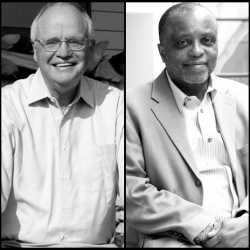
This issue's articles are available below.
ELI Members may login to read and download current and past issues of the Forum.
Not a member? Join now!

LEAD FEATURE ❧ As a society, we are devoted to the idea of spreading the costs of catastrophic losses. Continuing this commitment in the face of projected increases due to climate change will require ensuring that such programs also create incentives to engage in hazard mitigation.
With SIDEBARs from the Conservation Law Foundation | ELI’s expert on resilience.

CENTERPIECE ❧ When a community needs to heal, individual claims are not enough. Collective harm also needs to be addressed. As the Deepwater Horizon disaster shows, resources for regional recovery can and should be included in toxic tort court decisions or settlements.

COVER STORY ❧ The founders of modern conservatism saw a role for the state in ensuring environmental quality by regulating polluters. While that changed in more recent decades, there are signs that a new generation of conservatives favors a governmental role in reducing emissions
With SIDEBARs from Niskanen Center | a conservative scholar | a former GOP congressman.

TESTIMONY ❧ But first the two movements will have to rediscover their shared roots in a fundamental critique of an economy and a society that value things more than lives.

THE DEBATE ❧ Secretary of the Interior Ryan Zinke has announced an ambitious plan to reorganize his huge department and the administration of public lands. In particular, he envisions a regional structure that follows watersheds rather than geographic boundaries and moving some bureaus to western cities.
Clean energy progress is trumping Trump’s fossil fuels promo agenda.
Extremes in temperature — and in the handling and use of science.
Amid urban growth, funding cuts, local parks face new challenges.
Climate resilience means avoiding sources that emit carbon dioxide.
District Court to decide whether antiquities designations are final.
What to expect from ENRD’s new “back to basics” approach.
Some historical context to today’s debates on the climate agreement.
India's National Green Tribunal and the future of environmental justice.
On private action and climate policy.
School’s namesake would have supported gun activists.
Colleagues’ new jobs, promotions, and achievements.
Report on perils, promise of artificial intelligence.
Feeding the hungry with wasted food.
On a new grist for "water justice."